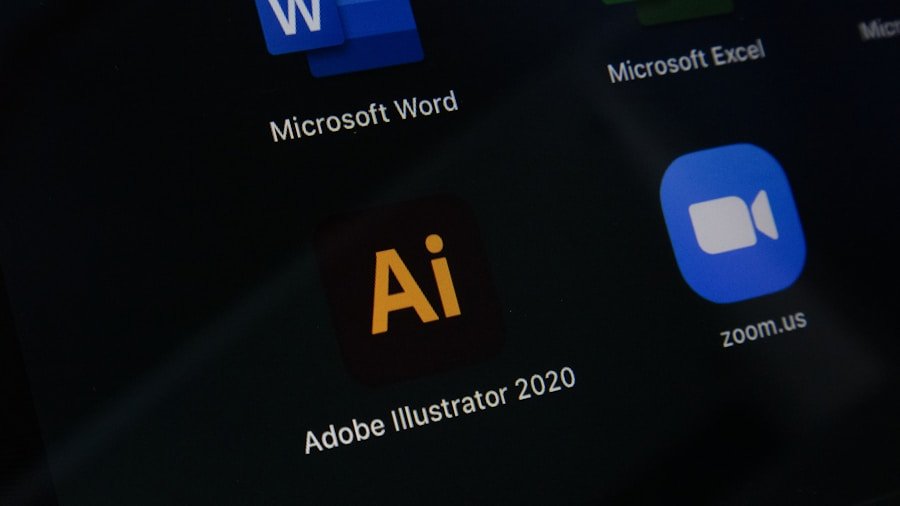Image to Text Conversion Tools
Image to Text Conversion TOOLS
Unlocking the Power of Image to Text Conversion: How to Easily Extract Text from Images
An image to text tool, also known as optical character recognition (OCR) software, is a technology that allows users to convert images containing printed or handwritten text into machine-encoded text. This means that the tool can recognize and extract the text from an image, making it editable and searchable. Image to text tools are incredibly useful for digitizing physical documents, extracting information from images, and making text accessible and editable in a digital format. These tools are widely used in various industries, including healthcare, finance, education, and more. They can save time and effort by eliminating the need to manually transcribe text from images, and they can improve the accessibility and usability of documents.
An image to text tool can be a standalone software application, a feature within a larger software suite, or a cloud-based service. Some image to text tools are designed for specific types of documents, such as business cards or receipts, while others are more versatile and can handle a wide range of image types. Regardless of the specific features and capabilities, the primary function of an image to text tool is to accurately and efficiently convert text from images into editable and searchable digital text.
How Does an Image to Text Tool Work?
Image to text tools use advanced algorithms and machine learning techniques to analyze the content of an image and identify the text within it. The process typically involves several steps, including image preprocessing, text detection, character recognition, and post-processing. During image preprocessing, the tool may adjust the image's contrast, brightness, and sharpness to improve the quality of the text. Text detection involves locating and isolating the text within the image, while character recognition involves identifying and interpreting individual characters. Finally, post-processing may involve error correction and formatting to ensure the accuracy and readability of the extracted text.
The specific methods and technologies used by image to text tools can vary depending on the software or service provider. Some tools may rely on traditional OCR techniques, while others may incorporate artificial intelligence and deep learning algorithms to improve accuracy and performance. Regardless of the underlying technology, the goal of an image to text tool is to accurately and efficiently convert text from images into editable and searchable digital text.
Benefits of Using an Image to Text Tool
There are numerous benefits to using an image to text tool. One of the most significant advantages is the ability to digitize physical documents and make their content accessible and editable in a digital format. This can save time and effort by eliminating the need to manually transcribe text from images, and it can also improve the usability and accessibility of documents. Additionally, image to text tools can improve the accuracy of extracted text compared to manual transcription, especially for handwritten or low-quality text.
Another benefit of using an image to text tool is the ability to extract information from images for further processing or analysis. For example, businesses can use image to text tools to extract data from scanned invoices or receipts for accounting purposes. Similarly, researchers can use these tools to extract text from historical documents for analysis and preservation. Overall, image to text tools can streamline workflows, improve data accuracy, and enable new possibilities for document management and analysis.
Common Uses for an Image to Text Tool
Image to text tools have a wide range of applications across various industries. In healthcare, these tools can be used to digitize patient records, extract information from medical forms, and improve the accessibility of healthcare documents. In finance, image to text tools can streamline invoice processing, automate data entry, and improve the accuracy of financial reporting. In education, these tools can digitize textbooks, extract information from research papers, and make educational materials more accessible to students with disabilities.
Beyond these specific industries, image to text tools are also commonly used for tasks such as business card scanning, receipt scanning, document archiving, and more. These tools can be particularly valuable for small businesses and individuals who need to manage large volumes of documents but may not have access to dedicated document management systems.
Tips for Choosing the Right Image to Text Tool
When choosing an image to text tool, there are several factors to consider. First and foremost, it's important to consider the specific types of images and documents you need to work with. Some tools may be better suited for certain types of documents or images, such as business cards or receipts, while others may be more versatile and capable of handling a wide range of image types.
Additionally, it's important to consider the accuracy and performance of the tool. Look for user reviews and testimonials to gauge how well the tool performs in real-world scenarios. It's also important to consider the ease of use and compatibility with your existing workflows and systems. Some image to text tools may offer integrations with popular software platforms such as Microsoft Office or Google Drive, which can streamline document management processes.
Finally, consider the pricing model and support options offered by the tool. Some image to text tools may offer flexible pricing plans based on usage or subscription models, while others may require a one-time purchase or upfront licensing fees. Additionally, consider the level of customer support offered by the tool provider, including documentation, tutorials, and technical support options.
How to Use an Image to Text Tool
Using an image to text tool is typically a straightforward process. Most tools offer a user-friendly interface that allows you to upload images containing text and initiate the conversion process. Depending on the specific tool you're using, you may have options for adjusting settings such as language recognition, formatting preferences, or output file types.
Once you've uploaded your image and initiated the conversion process, the tool will typically analyze the content of the image and extract the text into an editable format. Depending on the complexity of the document and the quality of the image, this process may take a few seconds or longer. Once the conversion is complete, you can review and edit the extracted text as needed before saving it in a digital format.
Some image to text tools also offer additional features such as batch processing for multiple images at once, integration with cloud storage services for seamless document management, or advanced formatting options for specific types of documents. Overall, using an image to text tool can be a simple and efficient way to digitize physical documents and make their content accessible in a digital format.
The Future of Image to Text Technology
The future of image to text technology is likely to be shaped by advancements in artificial intelligence and machine learning. These technologies have already improved the accuracy and performance of image to text tools by enabling more sophisticated algorithms for character recognition and document analysis. As these technologies continue to evolve, we can expect image to text tools to become even more accurate, efficient, and versatile.
Additionally, we may see new applications for image to text technology emerge in areas such as augmented reality and virtual reality. For example, image to text tools could be used to overlay digital information onto physical objects in real-time, enabling new possibilities for interactive experiences and information retrieval.
Overall, the future of image to text technology is likely to be characterized by continued innovation and expansion into new domains. As these tools become more advanced and accessible, they have the potential to transform how we interact with physical documents and make information more accessible in a digital world. Whether it's improving document management processes in businesses or enabling new educational experiences for students, image to text technology is poised to play a significant role in shaping the future of information access and management.





